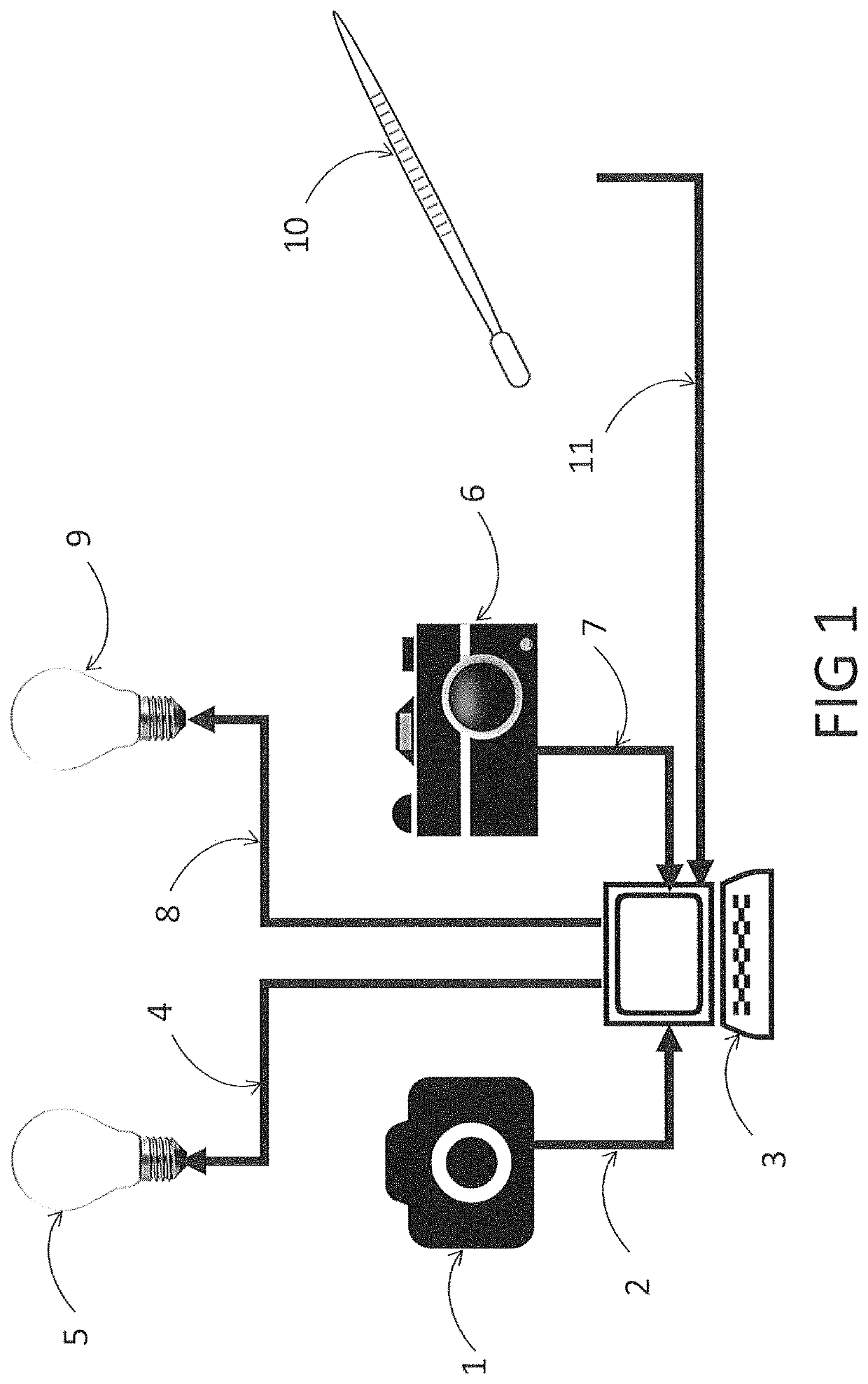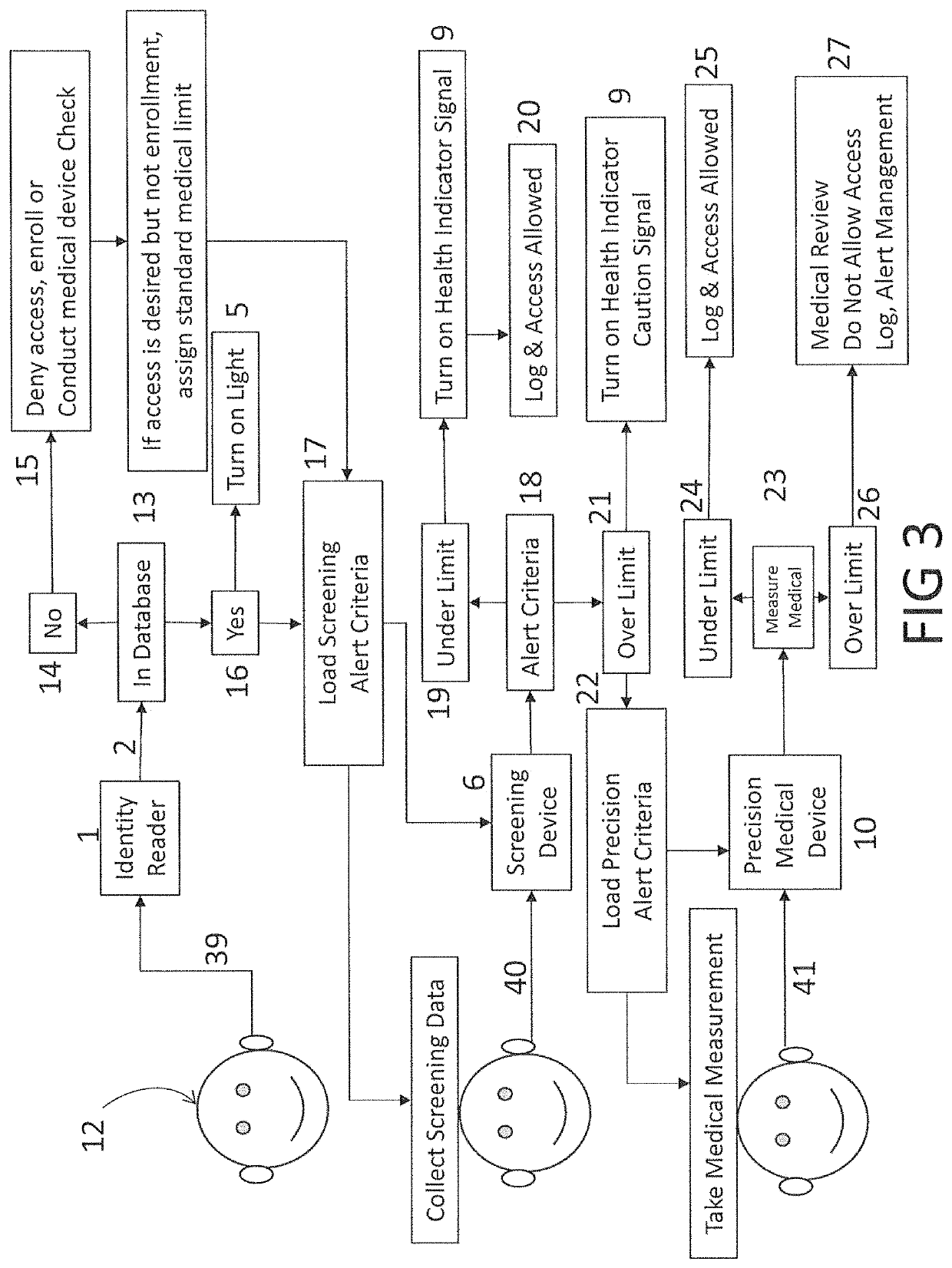Access and temperature monitoring system (ATMs)
a temperature monitoring system and temperature measurement technology, applied in the field of biometric identification, can solve the problems of compromising the utility of this technique, unable to take into account the measurement bias of the non-contact thermometer itself, and unable to compensate for the error introduced by prior-art methods
- Summary
- Abstract
- Description
- Claims
- Application Information
AI Technical Summary
Benefits of technology
Problems solved by technology
Method used
Image
Examples
Embodiment Construction
[0027]According to an exemplary embodiment, the networking together of components of prior art systems and coupling that with individual health data, date-time group and location of the individual creates a new capability to provide the ability to respond to a health crisis with visibility never known before. An exemplary embodiment of this system checks the identity and health of persons seeking access to or seeking to remain in a restricted area. It quickly checks the person's identity by recognizing the person, for example, by facial recognition, or by reading a unique token the person has, such as a smart card. If the person seeking access is recognized, the system quickly checks the health of the person by measuring some health indicator such as whether or not the person has an elevated temperature. If the quick assessment of the person's health indicates possible illness, the system alerts an operator or otherwise guides the person to get a more accurate health assessment; in ...
PUM
 Login to View More
Login to View More Abstract
Description
Claims
Application Information
 Login to View More
Login to View More - R&D
- Intellectual Property
- Life Sciences
- Materials
- Tech Scout
- Unparalleled Data Quality
- Higher Quality Content
- 60% Fewer Hallucinations
Browse by: Latest US Patents, China's latest patents, Technical Efficacy Thesaurus, Application Domain, Technology Topic, Popular Technical Reports.
© 2025 PatSnap. All rights reserved.Legal|Privacy policy|Modern Slavery Act Transparency Statement|Sitemap|About US| Contact US: help@patsnap.com



